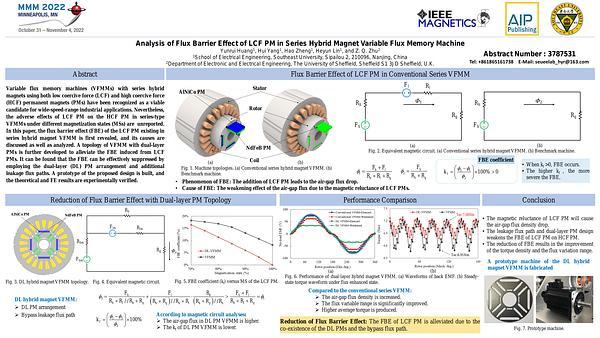Would you like to see your presentation here, made available to a global audience of researchers?
Add your own presentation or have us affordably record your next conference.
In the marine environment, energy supply for distributed sensors is one of the main difficulties facing Internet of Things technology. Up to now, a variety of energy
harvesters have been created to convert wave kinetic energy into electrical energy through electromagnetic induction, piezoelectric effects and other principles. At present, although some
wave energy harvesters can collect wave energy and provide power for some low-power products, the overall output response frequency is greater than 1Hz1, which is higher than the
most common wave frequency of 0.25Hz-1.0Hz. Some experts with extensive achievements in energy harvesters are committed to the research of low-frequency and broadband, however,
the output voltage of the designed wave energy harvester is too small2, meantime the overall structure is extremely complex3. In addition, scholars have not explored the multidirectional
energy harvesting enough, and the existing studies are mostly based on the spherical friction structure4, but spherical shapes can lead to lower energy density or material
utilization. In this paper, an electromagnetic wave energy harvester with a special double pendulum structure (as shown in Fig.1) has been proposed, the energy harvester can also capture
vibrational energy in multiple directions, responding to minimum frequencies of less than 0.25Hz and to currents with velocities of approximately 0.4m/s. This energy harvester can charge
a 220μF capacitor to about 32V in 50s with a peak power of 120mW under vibration conditions with a vertical height of 50 cm and a frequency of 1.0Hz, and can charge the capacitor to
about 16V in 50s at a horizontal speed of 0.72m/s (as shown in Fig.2). The results show that the wave energy harvester designed in this paper can respond to multi-directional vibrations,
and the response frequency is lower and wider, which is more favorable for wave energy harvesting.
References
1 H. Liang, G. Hao and O. Z. Olszewski, International Journal of Mechanical Sciences., Vol. 219, 107130 (2022)
2 M. Li, X. Jing, Energy Conversion and Management., Vol. 244, 114466 (2021)
3 Z. Li, X. Jiang and P. Yin, Applied Energy., Vol. 302, 117569 (2021)
4 Q. Gao, Y. Xu and X. Yu, ACS Nano., Vol. 16, p.6781-6788 (2022)

